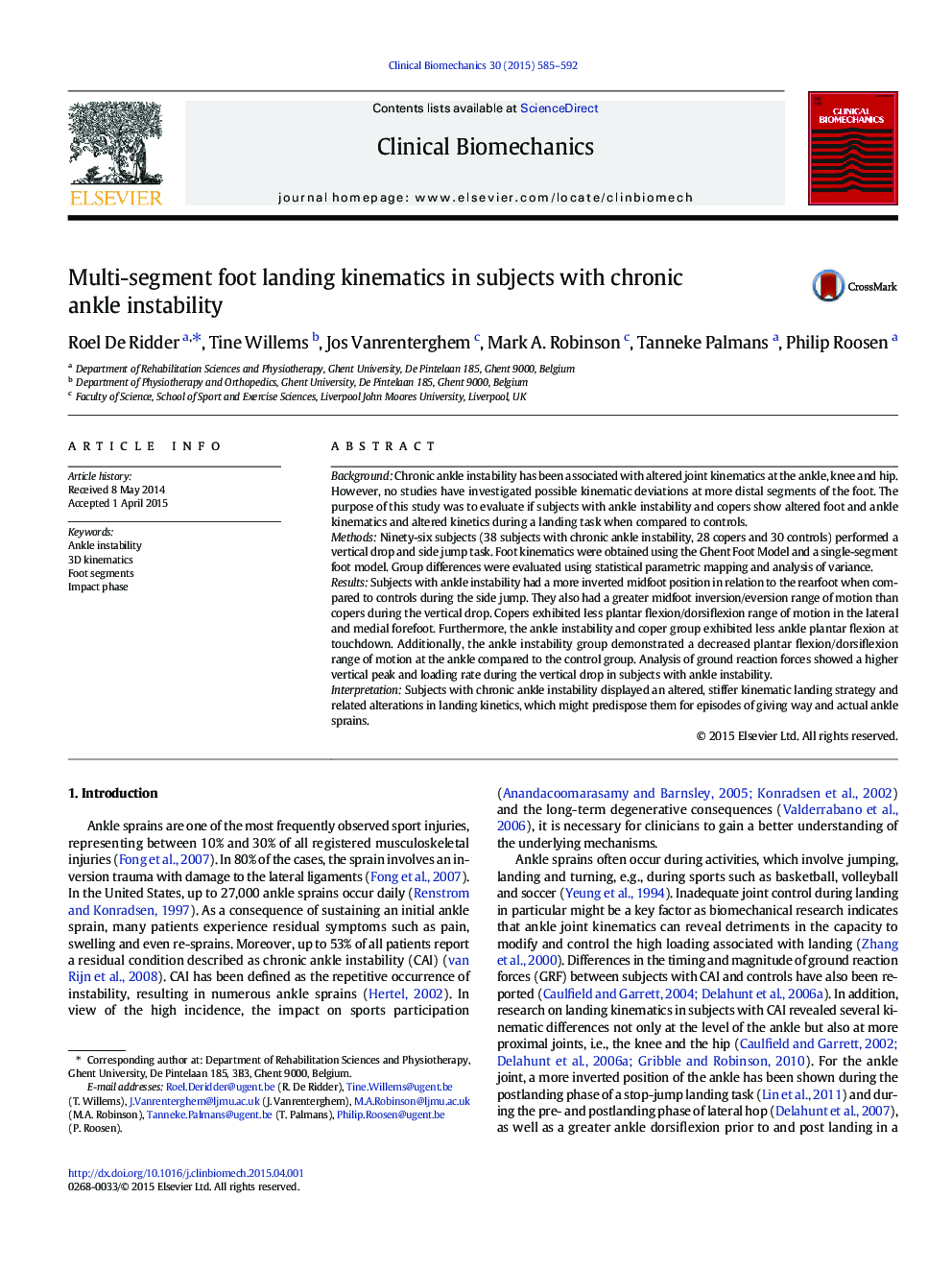| کد مقاله | کد نشریه | سال انتشار | مقاله انگلیسی | نسخه تمام متن |
|---|---|---|---|---|
| 4050242 | 1264913 | 2015 | 8 صفحه PDF | دانلود رایگان |
• Multi-segmented foot models may aid to identify influencing factors in chronic ankle instability.
• A stiffer foot landing strategy was seen during landing in subjects with chronic ankle instability.
• Subjects with chronic ankle instability endured higher vertical loading rates possibly increasing vulnerability.
• Copers differentiated themselves from chronic ankle instability and controls in kinematical and kinetic strategy.
BackgroundChronic ankle instability has been associated with altered joint kinematics at the ankle, knee and hip. However, no studies have investigated possible kinematic deviations at more distal segments of the foot. The purpose of this study was to evaluate if subjects with ankle instability and copers show altered foot and ankle kinematics and altered kinetics during a landing task when compared to controls.MethodsNinety-six subjects (38 subjects with chronic ankle instability, 28 copers and 30 controls) performed a vertical drop and side jump task. Foot kinematics were obtained using the Ghent Foot Model and a single-segment foot model. Group differences were evaluated using statistical parametric mapping and analysis of variance.ResultsSubjects with ankle instability had a more inverted midfoot position in relation to the rearfoot when compared to controls during the side jump. They also had a greater midfoot inversion/eversion range of motion than copers during the vertical drop. Copers exhibited less plantar flexion/dorsiflexion range of motion in the lateral and medial forefoot. Furthermore, the ankle instability and coper group exhibited less ankle plantar flexion at touchdown. Additionally, the ankle instability group demonstrated a decreased plantar flexion/dorsiflexion range of motion at the ankle compared to the control group. Analysis of ground reaction forces showed a higher vertical peak and loading rate during the vertical drop in subjects with ankle instability.InterpretationSubjects with chronic ankle instability displayed an altered, stiffer kinematic landing strategy and related alterations in landing kinetics, which might predispose them for episodes of giving way and actual ankle sprains.
Journal: Clinical Biomechanics - Volume 30, Issue 6, July 2015, Pages 585–592
